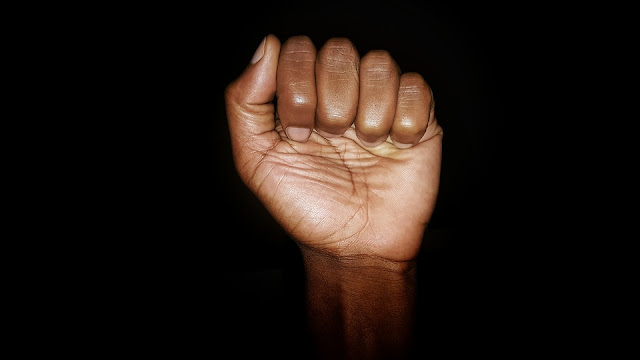Aim for the A* : Still I Rise
Still I Rise.
Maya Angelou (1928-2014) was an acclaimed African-American poet who wrote about the issues that plagued (and still affect) the Black community in America. Reflect on what some of these are. (Think slavery, segregation, disenfranchisement (not giving people the right to vote), discrimination, and the increasing criminalisation and policing of Black Americans by the police).
Her iconic poem ‘Still I Rise’ is hailed as being a rallying cry for oppressed people all over the world.
The poem varies in tone- being at times serious, sarcastic, defiant and even optimistic.
The poem explores various themes – to include racism, injustice, subjection and resilience. As said earlier, it is considered to send a strong, powerful message to people worldwide, and is therefore an act of solidarity, as it comments on the universality of the suffering of marginalized peoples. The tile, and the continued repetition of ‘Still I Rise’ gives hope and courage to the reader, showing that they can triumph over adversity at all costs.
The first stanza refers to a turbulent past which seems to be full of bitter falsehoods. She says that the African American people were treated like ‘dirt’ without any respect, but like dust, which is insignificant but all-pervasive, they will overcome whatever challenges they face and rise up again.
In a lighter vein, the second stanza calls out her oppressors as to why they are upset with the poet’s cheerful, cheeky attitude. She compares her walk to the action of oil wells. Oil wells are a sign of wealth (indeed oil is often referred to as ‘black gold’). This excellent use of words could indicate that she has wealth that her oppressors know nothing of, even if it is figurative rather than literal.
In the third stanza, the poet compares herself to the elements of the moon, sun, and tides. These are all natural phenomena that cannot be controlled by any man, least of which her oppressors.
Nature for her is a reminder of the predictability of life, of light dispelling the darkness. This metaphor reflects her belief that her hopes will not be squashed and that she can triumph over whatever oppression she has to endure.
In the fourth stanza the poet questions her white oppressors. Do they want to crush her spirit and see her broken and crying? She uses imagery of a subdued and anguished black population; a picture of failure and defeat, cowed down and defeated.
The poet is curious as to why her pride and self-respect upset her white oppressors. She reminds them again that though she may not have material wealth, she is rich in spirit, and will not be cowed down. Her laughter; loud and proud, is that of someone who owns ‘gold mines in her backyard’.
The sixth stanza uses the violent verbs of ‘shoot’ ‘kill’ and ‘cut’, implying that whatever the white oppressors do to her (these include hate speeches, insults, racial slurs and physical violence), she would still rise over their callousness.
The next stanza focuses on her sexuality as a woman. Maya was a dancer before she took up the pen. She shows that in spite of hardships and problems, she will continue to be attractive and use her body as a precious commodity. She shows that her political actions do not have to exclude her womanhood. She can be proud of her body, and flaunt it like other women flaunt their diamonds.
The eight stanza also refers to a collective, painful past. The alliteration in ‘huts of history’s shame’ refers to the despicable living conditions her forbearers’ endured as slaves and the continued misery that was inflected on them. But she knows that they will not be chained to their past. The metaphor of ‘black oceans’ paints a vivid picture of an ocean of people; multiplying and expanding, which is further reinforced by the assonance of ‘swelling and welling’.
The final stanza ends on a very positive note, implying that the past which was filled with ‘terror and fear’ is now left behind, as the oppressed people face a new future that is wondrously clear, a phrase which conveys a future of brightness, purity and clarity. She takes solace in the ancestral gifts she has been endowed with- resilience, stamina and courage, which will continue to guide her forward in the many challenges of her life.
The final three lines, with their repetition of ‘Still I rise’, form a mantra of positive energy. This serves as a final reminder that the discriminated will always find a way to triumph over their oppressors.
Note: Angelou uses a variety of linguistic techniques in the poem to reinforce the messages she is trying to convey. These include similes, metaphors, personification, alliteration, assonance, imagery, emotive language, rhyme and repetition. A few of these were discussed above- try to find examples for the rest!



this was so helpful. Thankyou so much! please do the rest of the passages and poems in the Anthology. I really need help with "young and dyslexic", H is for hawk and beyond the sky & earth.
ReplyDeleteHi, a great post
ReplyDeleteWe have million of students on Online Quran Aacdemy
Quran Learning is very important because this Holy Book contains information about every living and nonliving things.
ReplyDeleteLearn Quran Online
Learning Quran Online
Online Quran Classes
Hifz Classes online
Tajweed Classes online
Online Quran teacher
Female Quran tutor
Female Quran teacher
Online Quran Classes For Kids
thanks for sharing us
ReplyDeletenoorani qaida
Online Quran classes in the USA
Online Quran classes in the Uk
Surah Falaq Benefits